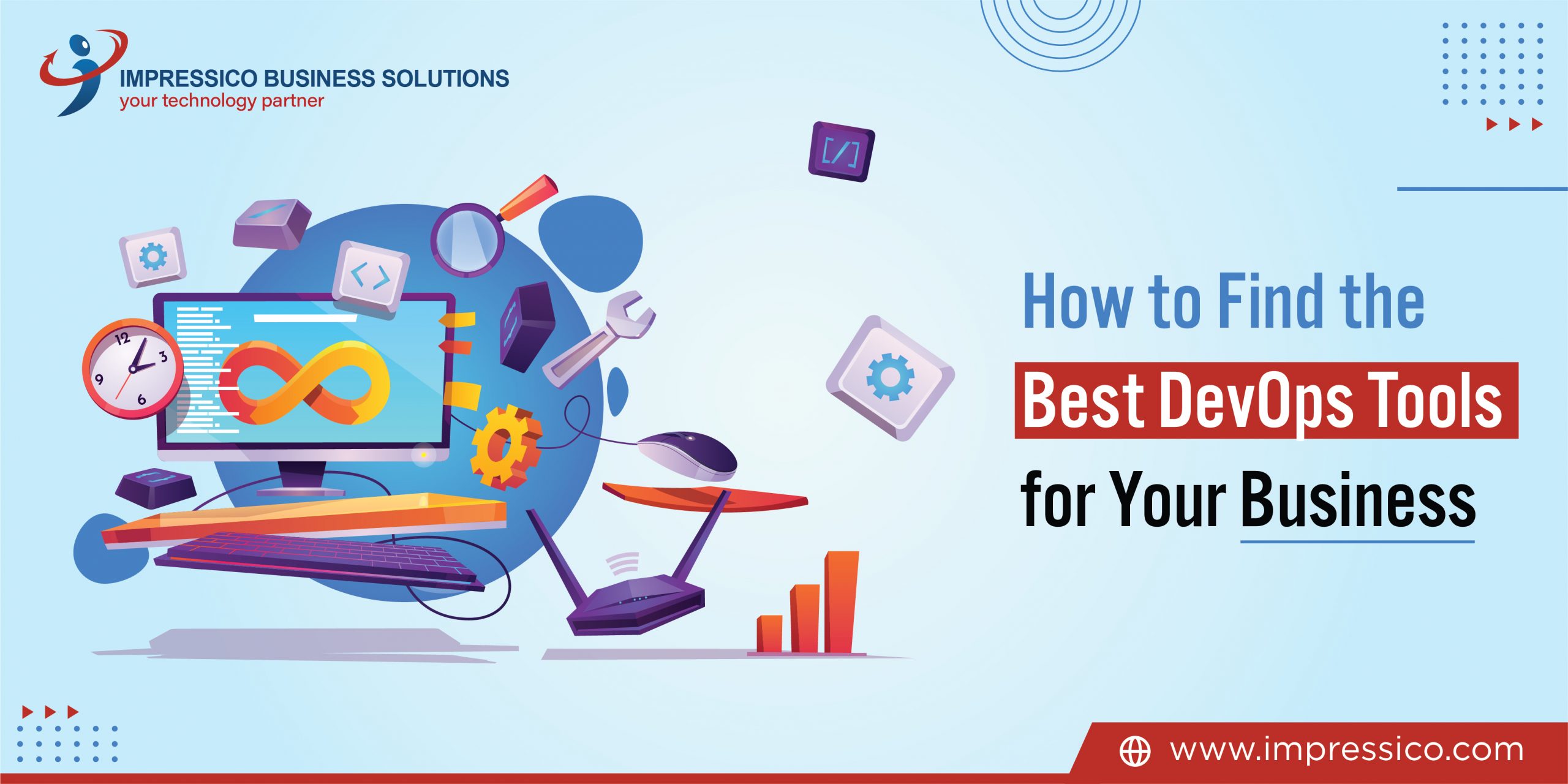How to Find the Best DevOps Tools for Your Business

Like other industries, IT also requires you to be more agile to stay ahead of the pace of modern business. The need to get software on the market faster is driving more companies to incorporate DevOps into their organizations.
According to a Research conducted by Global Market Insights, the industry’s future seems promising. The DevOps industry, for instance, was over $4 billion in size in 2019 and is anticipated to increase at a CAGR of over 20% between 2020 and 2026. (Source: strongdm)
Steps to Find Best DevOps Tools for Your Business
As DevOps service becomes more common, and businesses gain a better understanding of the benefits of connecting IT development teams, operations, and QA to deliver software faster, with higher quality, and at lower risk and cost. They are aware of the advantages of standardizing, automating, and speeding provisioning, as well as speeding up the process of building deployment, release, and build tasks across multiple environments.
With the business case being made, the focus is now shifting towards tools. In particular, which DevOps tools should you implement for your business? To find out the answer, you must evaluate your company, including existing processes and how you would like to enhance them.
Three steps are provided to help your company find the most effective DevOps tools that will reduce the time it takes to market and enhance the quality of software.
Step 1: Audit Current Processes, Requirements, and Tools
DevOps is more of a culture than it is a practice. This means that it won’t just change the way your team views software delivery but also the ways they work in order to complete the task. It will increase collaboration between teams as well as provide a more dynamic environment for developing and updating applications.
To make the transition easier and to better understand the tools, you need to understand the current procedures, processes, and standards that are used throughout the entire life cycle of software delivery. Review the tools you are currently using. What source control software, management tools, as well as other technologies are essential to your process? What tools are you able to use to consolidate, replace, or completely eliminate them?
Through a thorough audit, you’ll be able to identify the similarities between the various groups and requirements and create a common list of objectives that could be utilized when deciding on the appropriate tools to adopt. For instance, if your teams are using containers, it is recommended to search for DevOps tools that can support containers. Does your company have the appropriate DevOps tools?
Step 2: Evaluate Capabilities
Enterprises need tools to augment capabilities, bridge gaps, and integrate single-point solutions in order to support DevOps practices.
Start by looking at your capabilities during all phases of the software delivery process, including build, deploy, and release. This will help you identify opportunities for your company. This assessment allows teams to prioritize the changes that are needed and determine which tools will drive them.
For instance, companies that juggle multiple platforms might need to address tool sprawl. These companies may want one platform that covers all aspects of software delivery. This will make it easier for teams and individuals to work together in one place. Costs can be reduced by using a comprehensive DevOps platform.
Step 3: Identify Your Biggest Pain Points
IT can drive change faster with DevOps, particularly when it comes down to minimizing common problems. Examine your current processes to see the issues that are common, such as deployment errors and lack of visibility into the delivery process.
These and other problems can be solved by top 1o DevOps monitoring tools. Automation can help you avoid deployment errors caused by manual processes and poorly written scripts. These improvements can speed up development and reduce production outages. You can also reduce the duration and impact of failed deployments by using rollback features to return to a previous working version.
DevOps tools can help you identify your company’s most pressing software delivery and development issues. These are the most important things to consider when evaluating various platforms.
Choose DevOps Tools that Solve Key Problems in Your Processes
Although DevOps and Jenkins DevOps are still relatively new, it is very popular. You have many options to improve your process, speed up time to market and increase quality. It can be difficult to choose the right DevOps tool from such a vast array of options. These steps will help you narrow down the options to find the best tools for your business.
At Impressico, we help you realize the benefits that DevOps can bring to your organization. Integrating the right DevOps tools and technologies is the best thing to do if you want to save on money and time, while increasing quality and time to market.